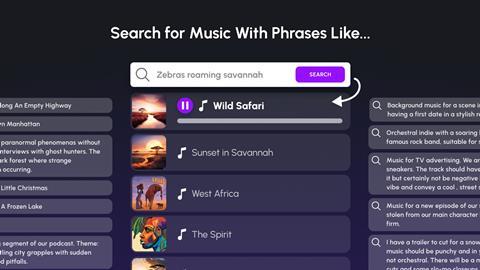Natural language and phrases can be used to find tracks

AIMS API has launched an AI-powered music search tool that allows users to find music using natural language and phrases instead of traditional keywords and tags.
Created after five years of research, Prompt Search allows user to type in a scene, location, time period, musical style oreven an entire music brief, and it will identify suitable tracksbased on the audio only and deliver them in seconds. It also works with catalogues with no keywords and tags, allowing entire music catalogues to be searched.
Martin Nedved, CEO and founder of AIMS API, said: “It’s fast, it’s accurate and it works like magic. Unlike other attempts at this type of music search, ours genuinely works. We are confident that once people try Prompt Search, they will not want to go back. Traditional keyword searches will always have limitations placed upon them by the humans who initially tag the music. Prompt Search removes those limitations and makes searching much more enjoyable and accurate.”
He continued: “AIMS AI Music Similarity Search and AI Auto-Tagging are now established products that are servingthe industry well and allowing people to thoroughly explore music catalogues and discover hidden gems thatmight otherwise be forgotten. Prompt Search is an evolution of the amazing search tech we already have, with the industry standard similarity search and tagging products. This new way of searching for music will benefit anyone in the creative industries who needs the right music.”
Howie Ross, music taxonomy researcher at AIMS API who played a key role in the creation of Prompt Search, added: “It really is miraculous. When I began experimenting with this technology, I typed in the phrase ‘tumbleweed rolling along an empty highway’. The machine immediately understood what I had in mind - a sort of Ry Cooder, Paris Texas vibe - and delivered a list of tracks that were ideal. I was amazed. I didn’t describe any instruments or moods - just scenery - and yet it was able to convert that simple command into something musical. From there I was able to skip through its suggestions until I found a track I liked. I then used Similarity Search to identify even more tracks that fitted my brief.”





























No comments yet